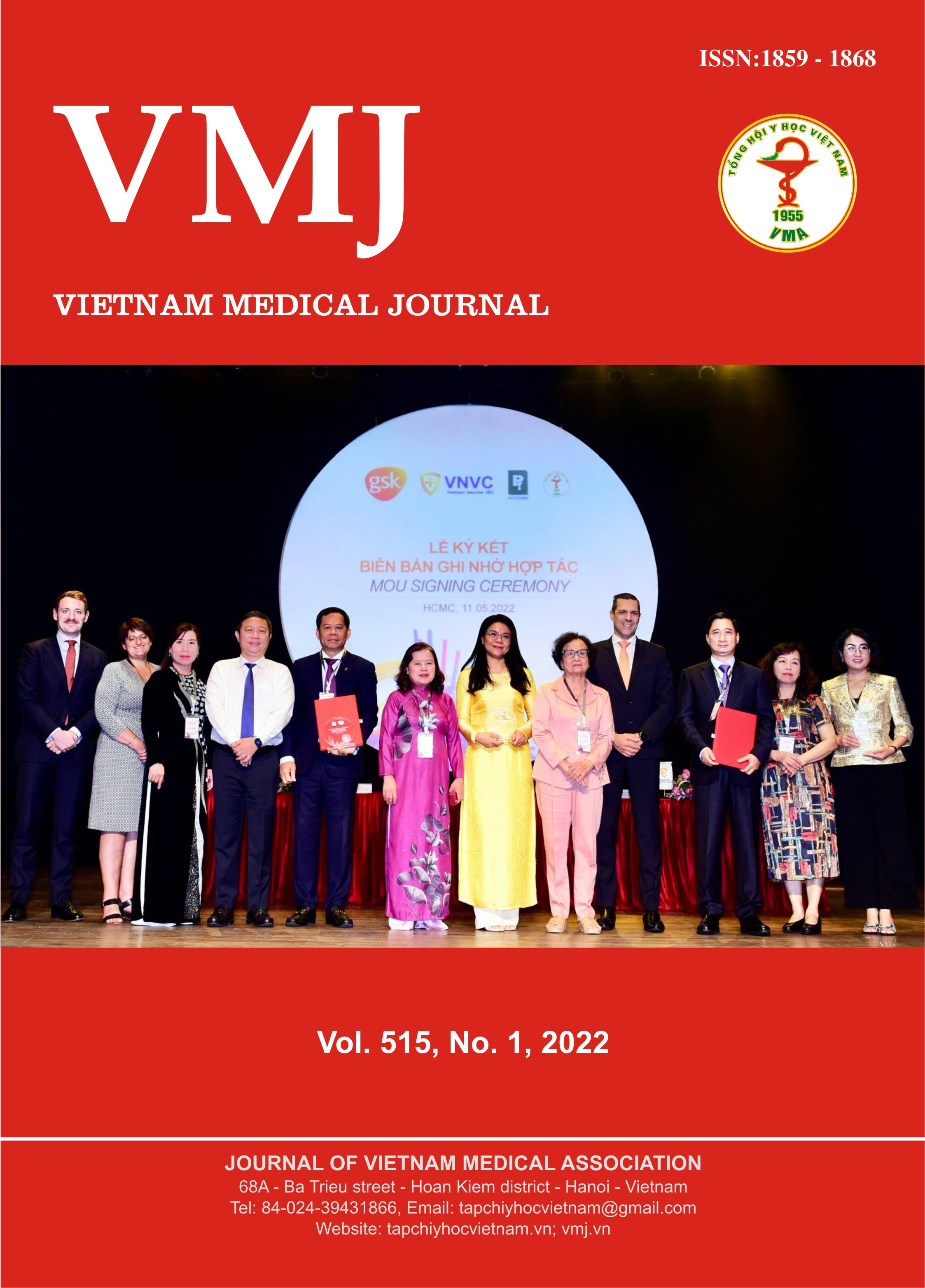EVALUATION OF THE TREATMENT OF MANDIBULAR CONDYLE FRACTURES THROUGH 95 CASES
Nội dung chính của bài viết
Tóm tắt
Objective: To evaluate the treatment results of mandibular condylar fractures for prescription of more appropriate treatment methods. Methods: This is a retrospective and prospective cross-sectional study with follow-up on 95 patients treated for mandibular condylar fractures at 108 Central Military Hospital from January 2018 to October 2021. Results: A total of 95 condylar fractures were observed, including 75 unilateral fractures and 20 bilateral fractures. The most common fracture locations are: low condylar neck 53/115 (46.1%), condylar head 27/115 (23.5%), high condylar neck 22/115 (19.1%), subcondylar 13/115 (11.3%). Little deviation 13/115 (11.3), average deviation 79/115 (68.7%), high deviation 23/115 (20%). Conservative treatment for 18/115 condyle with good and satisfactory results accounted for 89.3%. Surgical removal of 33/115 condyles with good and satisfactory results accounted for 89.3%. Fracture osteosynthesis for 64/115 condyles with good and satisfactory results accounted for 96.2%. Conclusion: Conservative treatment should be indicated for cases with small or no displacement and condylar removal surgery for cases of condylar fractures or multi-fragment high condylar fractures with moderate and high displacement. The indication of osteosynthesis for low condylar neck and subcondylar fractures will have a high success rate.
Chi tiết bài viết
Từ khóa
Mandibular condyle fracture, conservative treatment, osteosynthesis
Tài liệu tham khảo
2. Silvennoinen U, Iizuka T, Oikarinen K, Lindqvist C (1992), “Different patterns of condylar fractures: an analysis of 382 patients in a 3- year period”, J Oral Maxillofac Surg 50 (10), pp. 1032- 1037.
3. Shi J & cs (2014), “Causes and treatment of mandibular and condylar fractures in children and adolescents: a review of 104 cases”, JAMA Otolaryngol Head Neck Surg 140(3), pp. 203-207.
4. Ho Nguyen Thanh Chon (2004), “Conservative treatment of mandibular condyle fractures”, Graduation thesis, University of Medicine and Pharmacy, Ho Chi Minh City.
5. Le Van Phuong (2009), "Review on clinical, radiological and surgical characteristics of mandibular condyle fractures at the National Institute of Odonto-Stomatology", Master's Thesis, University of Medicine and Pharmacy. Hanoi.
6. Bhagol A, Singh V, Kumar I, Verma A (2011), “Prospective evaluation of a new classification system for the management of mandibular sub-condylar fractures”, J Oral Maxillofac Surg 69, pp. 1159-1165.
7. Ho Nguyen Thanh Chon (2016). “Treatment of mandibular condylar fractures by osteosynthesis via oral approach with endoscopic assistance”, Thesis of Doctor. Ho Chi Minh City University of Medicine and Pharmacy.
8. Pham Duong Chau et al. (2000), "Evaluation of surgical treatment results in 88 cases of mandibular condylar fractures", Vietnam Medical Journal, Specialty Odonto-Stomatology, No. 8,9, p. 47-49.
9. Schneider M & cs (2008), “Open reduction and internal fixation versus closed treatment and mandibulomaxillary fixation of fractures of the mandibular condylar process: a randomized, prospective, multicenter study with special evaluation of fracture level”, J Oral Maxillofac Surg 66(12), pp. 2537- 2544.
10. Nguyen Dinh Thanh (2020). “Clinical features, radiographic and conservative treatment results of mandibular condylar fractures caused by trauma using mini screws”. Thesis of Master. Hanoi Medical University.


